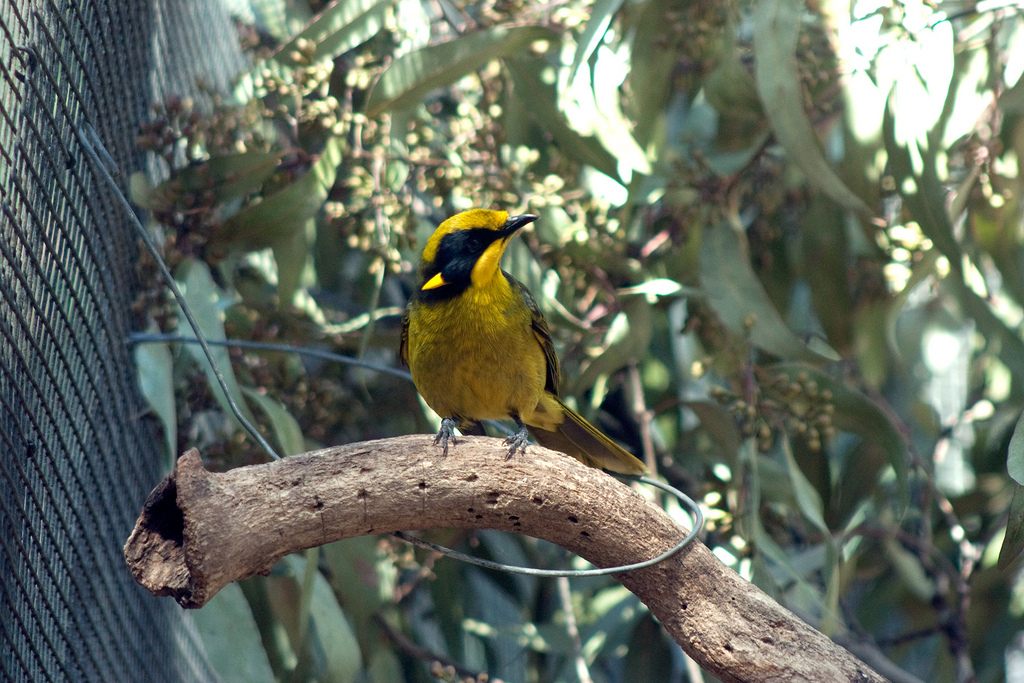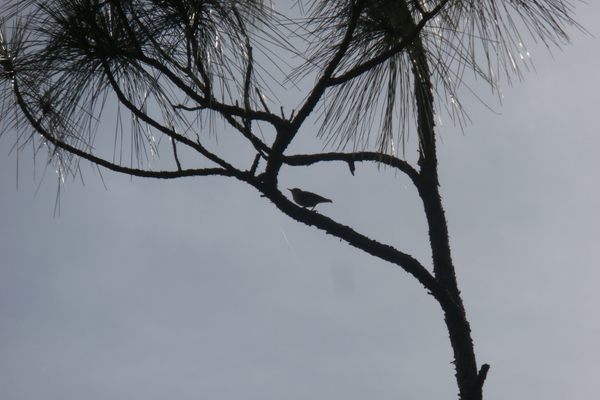Life Lessons From the Helmeted Honeyeater
This endangered species is learning when to love and when to fear.

If you need post-Valentine’s Day inspiration this year, look no further than the helmeted honeyeater. The endangered Australian species—whose population once fell as low as fifty birds—is having a great breeding season this year. As the Australian Associated Press reports, 36 helmeted honeyeater couples—a new record—have welcomed 61 new fledglings into the bird’s largest wild population, at Yellingbo Nature Conservation Reserve. And it’s all down to a judiciously applied mixture of love and fear.
There are about 170 known species of honeyeater in the world. All are unique to Australia, New Zealand, and the neighboring Pacific islands, and most eat nectar, which they get by sticking their long tongues into flowers or between pieces of bark. The helmeted honeyeater, a subspecies distinguished by its golden cap of feathers, has been the official bird of the Australian state of Victoria since 1971. Fans call them “HeHos.”
According to the Victorian Department of Sustainability and the Environment, the HeHo population “declined steadily throughout the 1990s.” Things became dire in the early 1980s, when several colonies were lost to a devastating series of brushfires. In 1989, the state began a concerted recovery effort. Conservationists now monitor a few wild populations, including the one at Yellingbo.

Those conservationists enhance the bird’s wild numbers with captive-bred individuals born and raised in two sanctuaries, including Taronga Zoo in Sydney and Healesville Sanctuary, which is run by Zoos Victoria. This past fall, four birds raised at Healesville were added to the Yellingbo population, so that they could join the love-in.
Affection has its limits, though. Like other animals raised in captivity, honeyeaters born in the sanctuaries also need to learn when to fear, or they won’t survive the big world outside their enclosures. As the AAP puts it, “When a helmeted honeyeater enters the wild, it not only fails to evade its main predators, but often flies directly towards them, resulting in its untimely death.”
To avoid this, the Healesville Sanctuary puts its birds through what they call a “stranger danger program” by staging scary mock goshawk attacks. Employees put a goshawk in an enclosure near the honeyeaters, and encourage it to fly back and forth. At the same time, they drop a shade cloth over the honeyeater’s enclosure. The noise and darkness scares the birds into hiding, and they eventually learn to associate this fear with the goshawk.

This season’s Yellingbo fledgling numbers are “fantastic news for the recovery program,” government ornithologist Bruce Quin told the AAP. “It means the birds that are reaching breeding age are replacing lost birds or, in some cases, finding their own breeding sites.”
Their ability to spurn goshawks has helped as well. Since the anti-predator training started, the survival rate of rereleased birds has gone from about 45 percent to above 90 percent. To make it in this world, you have to know when to love and when to protect yourself.
















Follow us on Twitter to get the latest on the world's hidden wonders.
Like us on Facebook to get the latest on the world's hidden wonders.
Follow us on Twitter Like us on Facebook